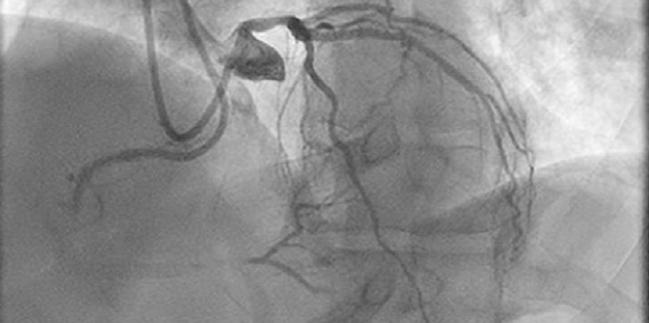Patients Commonly Get High Radiation Doses During CTO PCI
Certain clinical and angiographic factors should serve as a reminder to pay more attention to radiation protection, investigators say.

ANAHEIM, CA—Even in the hands of experienced operators, PCI of a chronic total occlusion (CTO) often results in patients receiving high doses of radiation, a registry study shows.
Across multiple centers, 23% of patients who underwent CTO PCI received a high dose (greater than 5 Gy), Judit Karacsonyi, MD (VA North Texas Healthcare System and UT Southwestern Medical Center, Dallas), reported recently at the American Heart Association 2017 Scientific Sessions here.
She and her colleagues identified several clinical and angiographic factors that could help identify patients most at risk for receiving excess radiation, including higher body mass index, prior CABG, moderate/severe calcification, proximal cap ambiguity, and longer occlusion length.
“If we find patients who have these, we can predict that the patient is going to receive a higher dose so we can pay even more attention to radiation protection,” Karacsonyi told TCTMD. Efforts to enhance protection might include changes to fluoroscopy settings and use of various types of shielding for patients and operators, she said.
Concerns about radiation exposure should not discourage operators from performing CTO PCI when there is a clinical need for the procedure, Karacsonyi added. “Radiation protection is critical and really important, and we shouldn’t be afraid of this,” she said.
Substantial Variation Across Centers
To get of a sense of patient radiation exposure during CTO PCI in contemporary practice, the investigators turned to the multicenter PROGRESS-CTO registry. The current analysis included data on 1,517 patients (mean age 64.7 years; 86% men) treated at 12 US centers between 2012 and 2017.
Overall, the air kerma radiation dose received by patients was low (less than 2.1 Gy) in 33%, intermediate (2.1 to 5.0 Gy) in 44%, and high (greater than 5.0 Gy) in 23%. The mean was 2.95 Gy, although Karacsonyi said she was surprised to see substantial variation across centers. In fact, treatment at a few specific centers was predictive of a high radiation dose after multivariable adjustment.
“So even in experienced centers with experienced CTO PCI operators, there is room for improvement,” she said.
Not surprisingly procedural time, fluoroscopy time, and contrast volume were all lowest in patients with low radiation exposure and highest in those with high exposure. Technical and procedural success rates were best in those with low radiation exposure.
In terms of complications, the rate of perforation was lowest among patients who had low radiation exposure (3.21%), increasing to 6.44% and 6.27% in the intermediate and high exposure groups, respectively.
The rate of pericardiocentesis increased along with radiation exposure as well—0.60% to 0.90% to 1.99%—but the difference was not statistically significant (P = 0.129).
Asked whether the findings have any implications for the broader debate over whether CTO PCI should even be performed, Karacsonyi said worries about radiation should not factor into the decision. She said, however, that additional randomized data are needed to prove that CTO PCI is beneficial.
The current registry study was limited, she said, by the fact that clinical events were not adjudicated by an independent committee, by the observational design, by the lack of quantitative coronary angiographic analysis, and by the inclusion of experienced operators, which may limit the generalizability of the findings to less experienced centers and operators.
Todd Neale is the Associate News Editor for TCTMD and a Senior Medical Journalist. He got his start in journalism at …
Read Full BioSources
Karacsonyi J. Radiation exposure of patients during chronic total occlusion percutaneous coronary intervention: update from a contemporary multicenter registry. Presented at: American Heart Association 2017 Scientific Sessions. November 12, 2017. Anaheim, CA.
Disclosures
- Karacsonyi reports no relevant conflicts of interest.


Comments